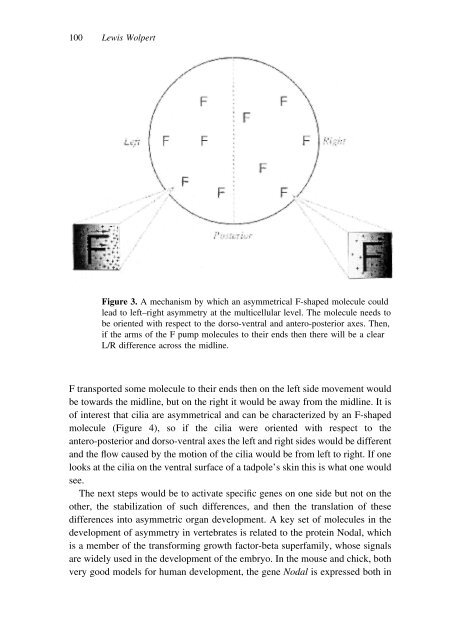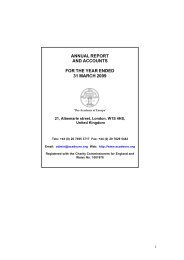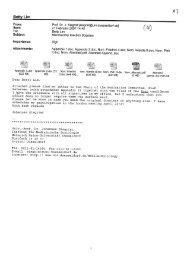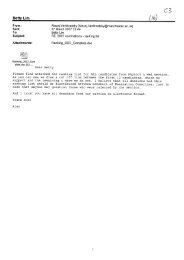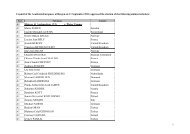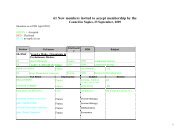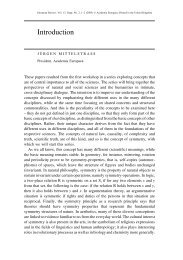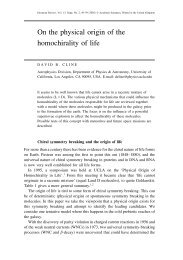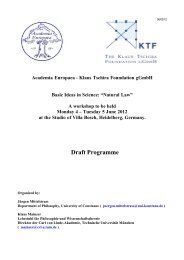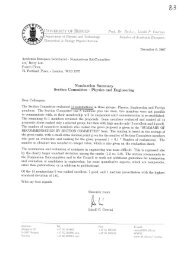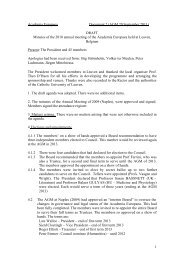Development of the asymmetric human - Academia Europaea
Development of the asymmetric human - Academia Europaea
Development of the asymmetric human - Academia Europaea
You also want an ePaper? Increase the reach of your titles
YUMPU automatically turns print PDFs into web optimized ePapers that Google loves.
100 Lewis WolpertFigure 3. A mechanism by which an <strong>asymmetric</strong>al F-shaped molecule couldlead to left–right asymmetry at <strong>the</strong> multicellular level. The molecule needs tobe oriented with respect to <strong>the</strong> dorso-ventral and antero-posterior axes. Then,if <strong>the</strong> arms <strong>of</strong> <strong>the</strong> F pump molecules to <strong>the</strong>ir ends <strong>the</strong>n <strong>the</strong>re will be a clearL/R difference across <strong>the</strong> midline.F transported some molecule to <strong>the</strong>ir ends <strong>the</strong>n on <strong>the</strong> left side movement wouldbe towards <strong>the</strong> midline, but on <strong>the</strong> right it would be away from <strong>the</strong> midline. It is<strong>of</strong> interest that cilia are <strong>asymmetric</strong>al and can be characterized by an F-shapedmolecule (Figure 4), so if <strong>the</strong> cilia were oriented with respect to <strong>the</strong>antero-posterior and dorso-ventral axes <strong>the</strong> left and right sides would be differentand <strong>the</strong> flow caused by <strong>the</strong> motion <strong>of</strong> <strong>the</strong> cilia would be from left to right. If onelooks at <strong>the</strong> cilia on <strong>the</strong> ventral surface <strong>of</strong> a tadpole’s skin this is what one wouldsee.The next steps would be to activate specific genes on one side but not on <strong>the</strong>o<strong>the</strong>r, <strong>the</strong> stabilization <strong>of</strong> such differences, and <strong>the</strong>n <strong>the</strong> translation <strong>of</strong> <strong>the</strong>sedifferences into <strong>asymmetric</strong> organ development. A key set <strong>of</strong> molecules in <strong>the</strong>development <strong>of</strong> asymmetry in vertebrates is related to <strong>the</strong> protein Nodal, whichis a member <strong>of</strong> <strong>the</strong> transforming growth factor-beta superfamily, whose signalsare widely used in <strong>the</strong> development <strong>of</strong> <strong>the</strong> embryo. In <strong>the</strong> mouse and chick, bothvery good models for <strong>human</strong> development, <strong>the</strong> gene Nodal is expressed both in


